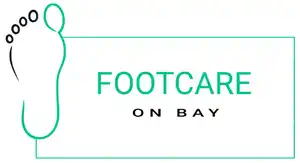Growth Plate Injuries in Children Expert Pediatric Foot Care in Toronto
Growth Plate Injuries in Pediatric Foot Care: Causes, Treatment & Prevention
If your child complains of persistent foot pain after an injury or sports activity, they might have a growth plate injury, a common but often overlooked condition in children.

What Are Growth Plate Injuries?
Growth plates (physis) are soft cartilage areas near the ends of children’s bones where new bone forms. These plates are vulnerable to injury until they harden into solid bone during adolescence. Growth plate injuries account for 15–30% of childhood fractures, with the ankle and foot being common sites.
Why They Matter:
-
- Growth plates determine bone length and shape.
- Untreated injuries can cause uneven limb growth or deformities.
- Early intervention is critical to prevent complications.
Causes of Growth Plate Injuries
- Acute Trauma
- Sports Injuries: Soccer, basketball, gymnastics (45% occur during sports).
- Falls or Twists: Ankle sprains from playgrounds or trampolines.
- Vehicle Accidents: Bicycle or car crashes.
- Overuse (Stress Injuries)
- Repetitive Stress: Running, dancing, or year-round sports.
- Poor Training Habits: Sudden increases in activity intensity.
- Medical Conditions
- Osteomyelitis: Bone infections affecting growth plates.
- Genetic Disorders: Skeletal dysplasias or endocrine diseases.
Your Feet Deserve Professional Care
Book your appointment today and take the first step toward healthier, pain-free feet.
Symptoms to Watch For
- Pain localized to the growth plate (often near ankle or heel).
- Swelling or warmth at the injury site.
- Difficulty Bearing Weight: Limping or refusal to walk.
- Deformity: Visible misalignment in severe cases.
Note: Pain that persists >48 hours after injury warrants evaluation.
Diagnosis & Classification
- Physical Exam
- Tenderness to touch over the growth plate.
- Limited range of motion in the affected foot/ankle.
- Imaging
- X-rays: Identify fractures (Salter-Harris classification).
- MRI/CT Scans: Detect subtle injuries in complex cases.
Salter-Harris Fracture Types
Type Description (Prognosis)
- Straight through growth plate – (Excellent with proper care)
- Through plate + metaphysics – (Good if aligned)
- Through plate + epiphysis – (Higher complication risk)
- Through plate, metaphysis, epiphysis – (Often requires surgery)
- Crush injury to plate – (Poor – growth arrest likely)
Treatment Options
- Non-Surgical Care
- Rest & Immobilization: Casts or boots for 3–6 weeks.
- RICE Protocol: Rest, Ice, Compression, Elevation.
- Physical Therapy: Restore strength and flexibility post-healing.
- Surgery
- Closed Reduction: Align bones without incision.
- Internal Fixation: Pins/plates for unstable fractures (Types III–V).
Healing Time: 4–8 weeks for most injuries; complex cases may take longer.
What Our Customers Say
Prevention Strategies
For Parents & Coaches
- Footwear: Choose shoes with ankle support for high-impact sports.
- Cross-Training: Rotate activities to avoid overuse.
Strength Training: Focus on calf and foot muscles
For Young Athletes
- Warm up properly before games/practices.
- Report foot/ankle pain immediately-don’t “play through it.”
FAQs: Answering Parents’ Top Concerns
Can growth plate injuries cause one leg to be shorter?
Yes, if the injury disrupts the growth plate’s function (Types IV/V). Regular monitoring helps catch issues early.
How long until my child can play sports again?
Most return in 6–12 weeks after clearance from a pediatric orthopedist.
Are growth plate injuries more serious than broken bones?
Yes-they can affect future bone growth if mismanaged.
Do growth plate injuries show up on X-rays?
Sometimes. MRI may be needed if X-rays are normal but symptoms persist.
Can braces prevent these injuries?
Ankle braces reduce sprain risks in high-risk sports like basketball.
When to See a Pediatric Specialist
Seek immediate care if your child has:
- Inability to bear weight
- Visible deformity or severe swelling
- Persistent pain despite rest
- History of recurrent injuries
Long-Term Outlook
Most children recover fully with timely treatment. However, 5–10% of cases may develop complications like:
- Leg length discrepancy
- Angular deformities (e.g., knock-knees)
- Early arthritis
Regular follow-ups until skeletal maturity ensure proper growth.
Take Action: Protect Your Child’s Growth
Our pediatric foot specialists combine advanced diagnostics with personalized care plans to treat growth plate injuries and prevent long-term issues.
Growth plate injuries in children’s feet require prompt attention to ensure proper healing and prevent complications. By recognizing symptoms, seeking timely medical care, and following treatments like immobilization or physical therapy, parents can support their child’s recovery and return to activity.
Most injuries heal well with conservative care, allowing kids to resume running, jumping, and playing without lasting effects.
Looking for better foot support? We're just around the corner.
Call us today at
